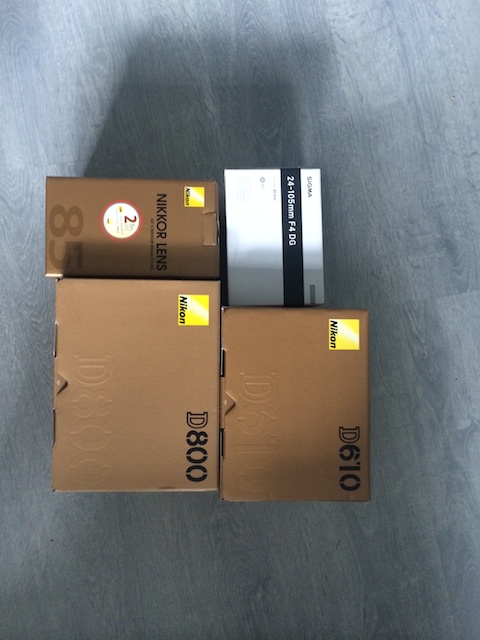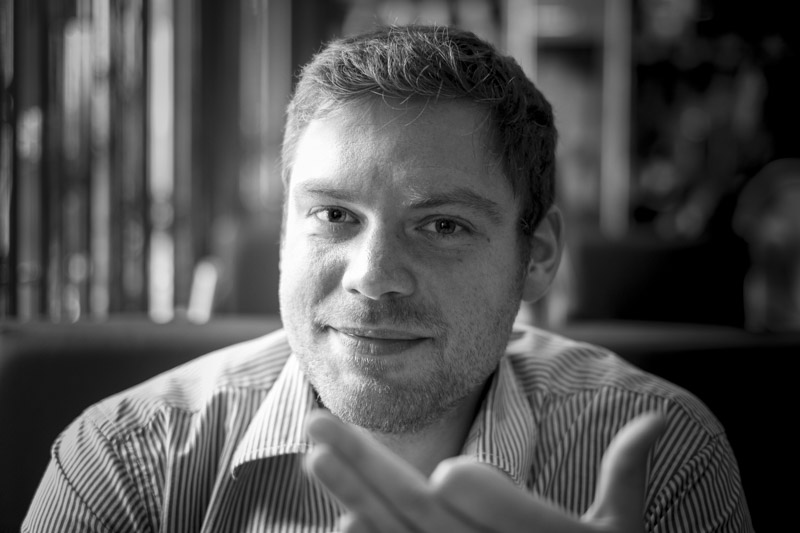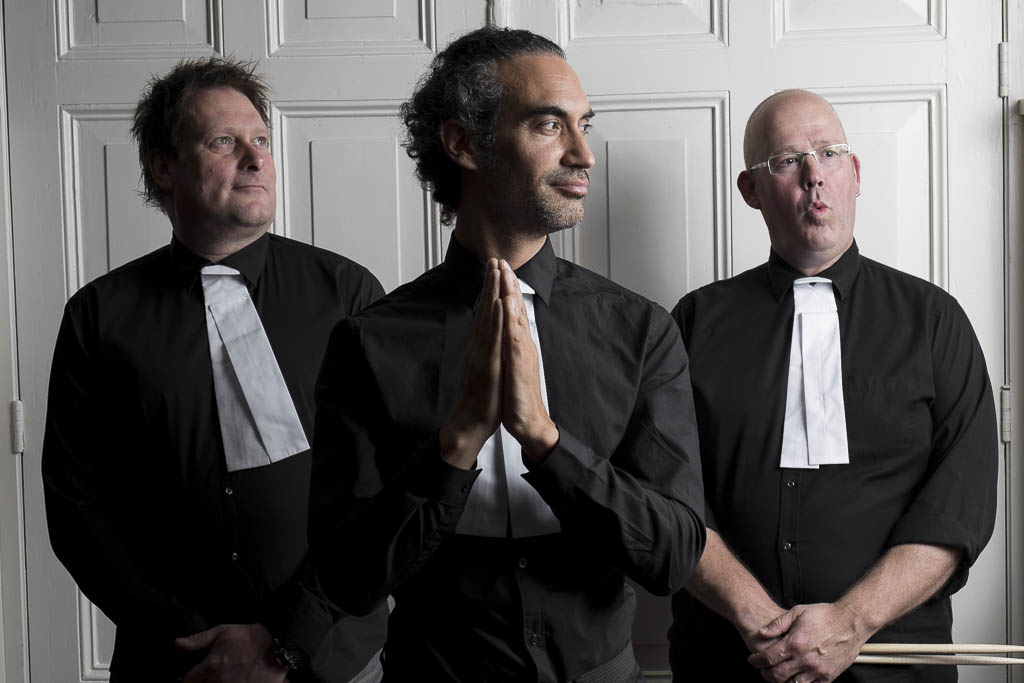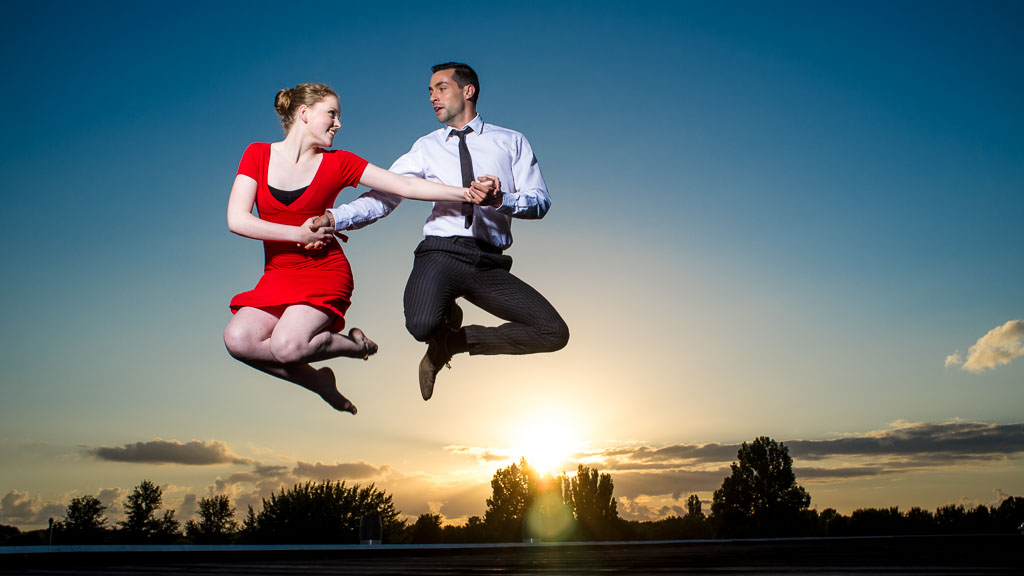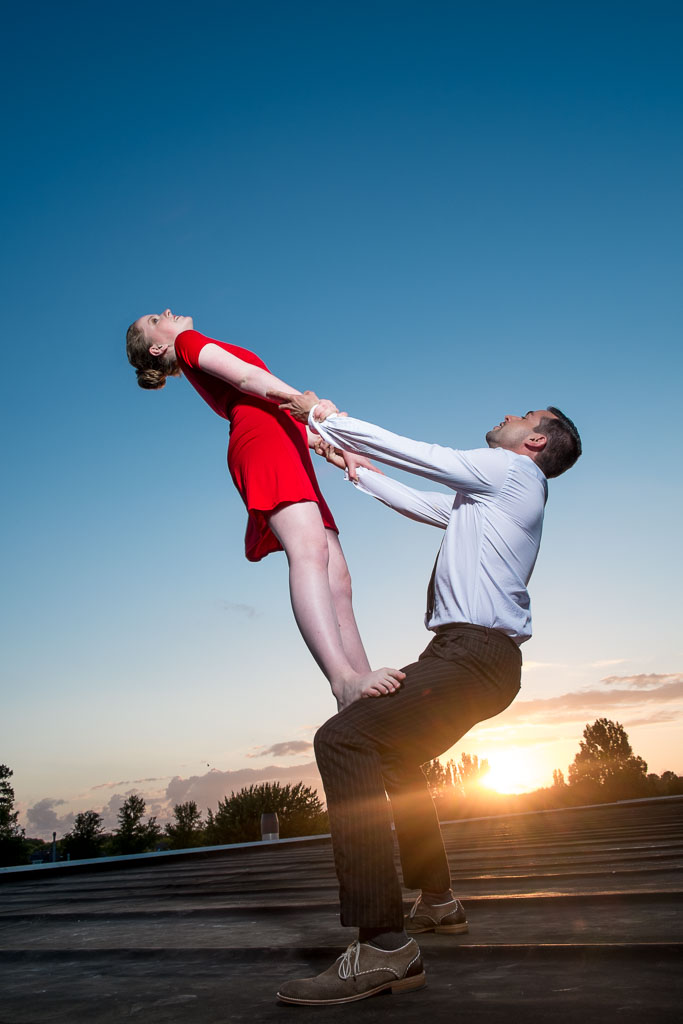Portrait Session: Kees Visser
Yesterday I did a studio portrait sessions with comedian Kees Visser. For an assignment I am working on I asked Kees Visser to model, but more on the assignment later...
The set up
For the lighting I mainly used my big friend the Elinchrom Rotalux 150 indirect Deep Octa. On some Images I used the 35x90 Strip soft box with a 30x50 grid in it. But somehow this looked a little to modern. So I removed it and used just the white side of the 5-in-1 reflector handheld by my assistent. The background was just used a roll of grey seamless.
For camera I used the Nikon D800 with the Nikon 85mm 1.8g or 50mm 1.8g. The settings where around ISO200, 1/250 f5.6 or f8.
Post processing
During the shoot I shot straight into Capture One Pro 8. Normally I just do basic RAW-editing in Capture One Pro 8 and all the rest in Photoshop CC. But this time I wanted to do all my editing in Capture One Pro 8. And I must say, Capture One pro 8 is great for RAW-editing, but some how for the complete editing workflow I don't know... Masking and working with curves keeps feeling easier in Photoshop. Also the dodge and burning stuff is easier in Photoshop.
But for sharpening and correct lighting Capture Pro 8 rules! I think Capture Pro 8 is great for full workflow on like weddings or landscape. but for commercial and portrait jobs I will keep Photoshop on the side!
Please keep in mind that I am still learning Capture Pro 8, so my opinion may chance in the feature.
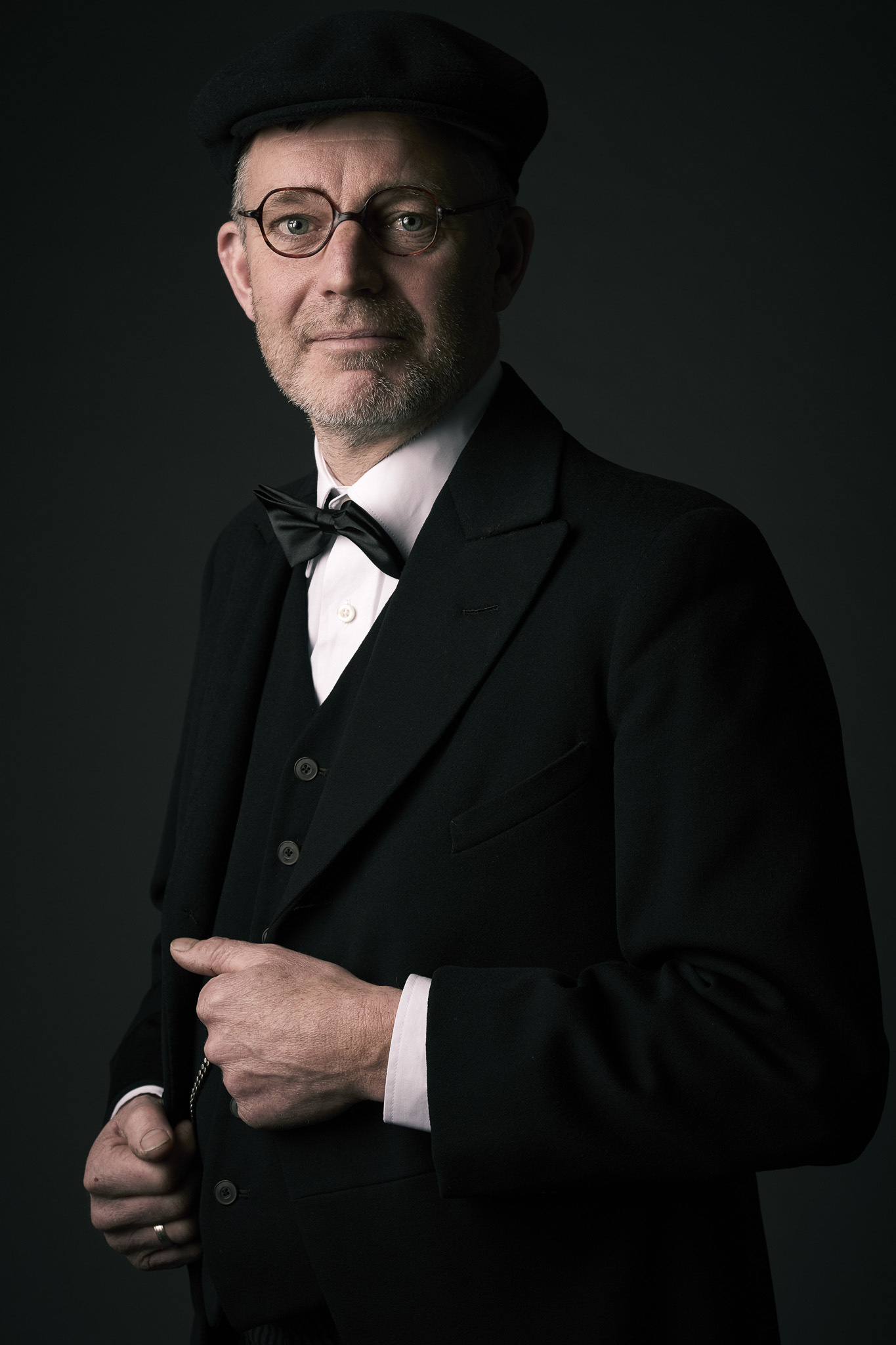
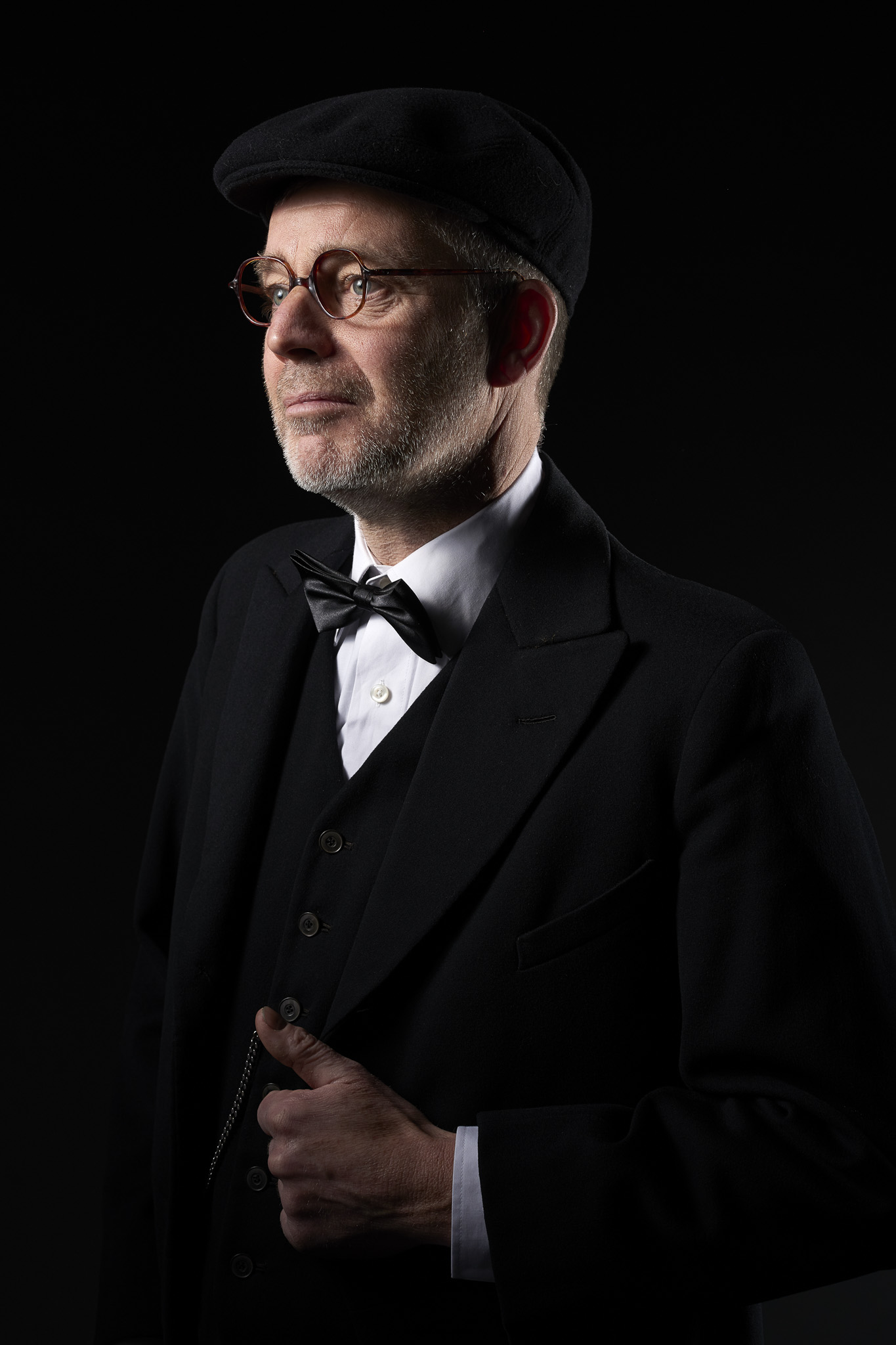
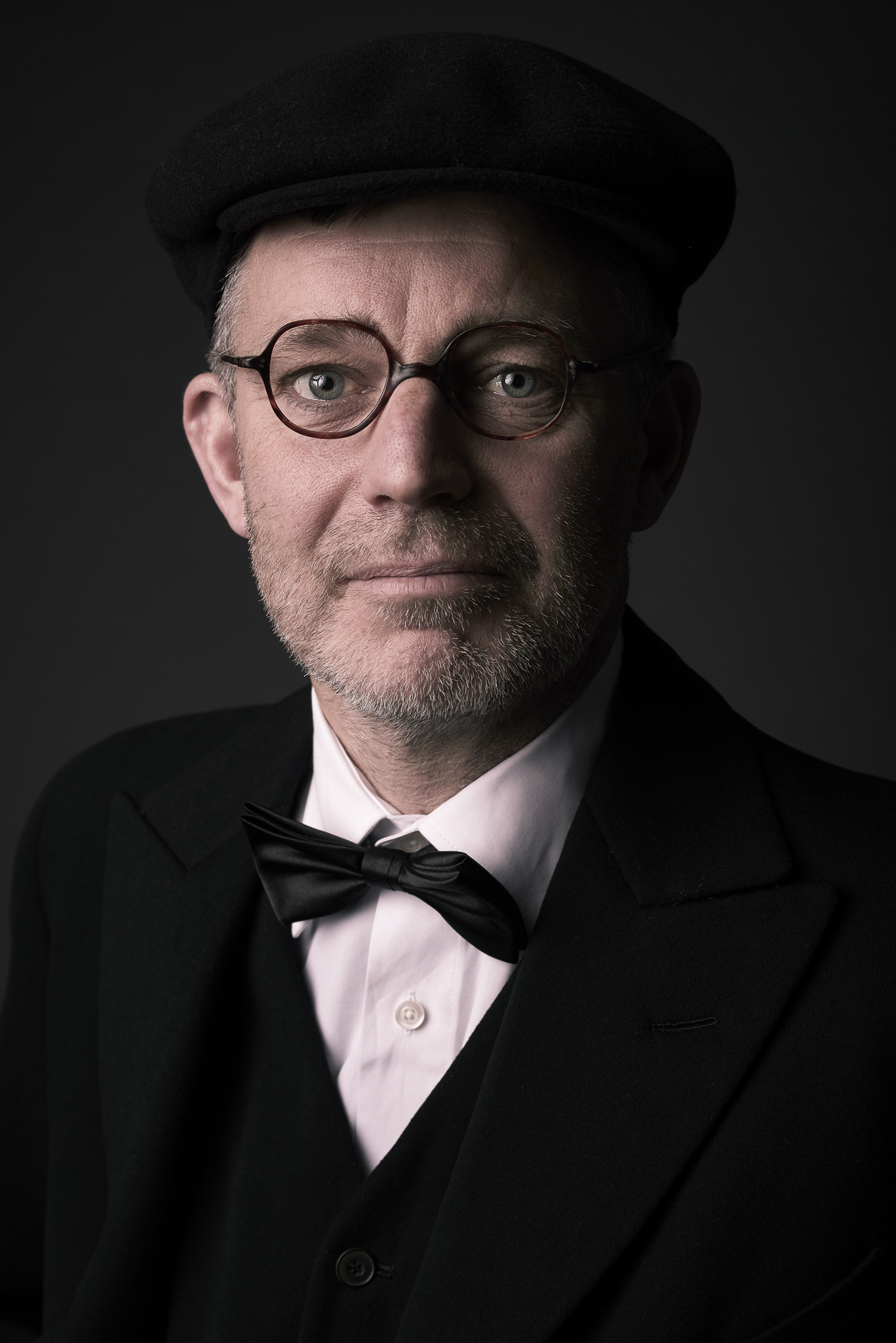
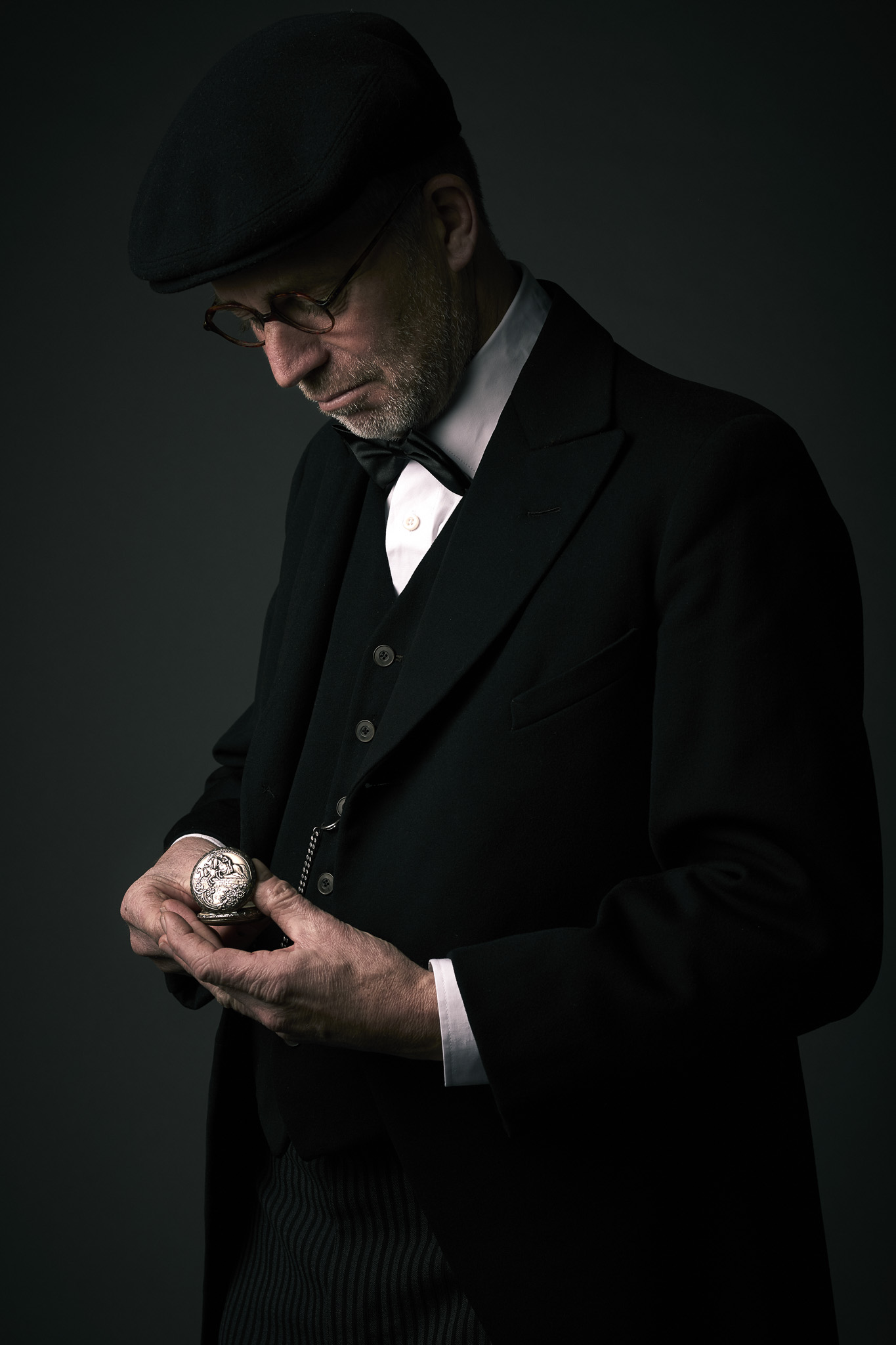
WHAT'S IN THE CAMERA BAG PART 2 THE NIKON BAG
This week part 2 in the series "What's in the bag", the Think Tank Airpot Airstream Nikon Bag! For the people who mist the last one about the Fuji Kit. You can read it here: WHAT'S IN THE CAMERA BAG PART 1: THE FUJI KIT.
This is my big production Nikon kit. Which I take with me on bigger productions and studio jobs. I must say I really like my Fuji's, but with no thetering options, only 16 megapixels and the writing speed, I still prefer my DSLR Nikon kit on bigger jobs!
The Think Tank Airport Airstream Bag
Did I all ready said I love Think Tank bags? Well, I do. They are great. In small packages they offer great space. You can easily adjust the lay-out to your needs with nice extra pockets on the outside and offer great protection for you gear. Beside the option to lock your zippers there is also a security cord in it so you can lock it to something else like a desk.
So this is how I configured mine:
My Nikon Gear
As told before I keep all my Nikon gear in it:
- Nikon D800
- Nikon D610
- Nikon 85 1.8G
- Nikon 50 1.8G
- Nikon SB-700
- Sigma 24-105 f4 Art
- Sigma 70-200 2.8
- Hohnle Grid
- Color checker
- Gossen Digisky Lightmeter
In the other pockets are other thing like:
- Business cards
- 8 Sanyo Enelope AA rechargeable batteries
- Extra Batteries for the camera's
- Connection cords
- Cleaning cloth
- Thetering cable
So this is my Nikon Big production kit. Next time I will take you through my Analog bag and my small production Nikon kit.
Hasselblad Session: Get Hurt
Since a couple of weeks I have borrowed the Hasselblad 500 c/m with the Planar 80mm, 2.8 lens from Hans van Ommeren. I have always loved the look of the Hasselblad 500 series camera, but never worked with one. So before I'm going to buy one, I wanted to test a 500 series camera to see if it works for me. So I set up a session to test it out
The concept
For this shot I wanted to photograph it as a small six story picture telling a story. In the end It became two stories. I only wanted to do it with one roll off Kodak T-Max100 Black and white film.The Analog one shot with the Hasselblad 500c/m and the one shot with the Nikon D800, more on this later.
I wanted to tel the story the story of somebody who lost everything and goes somewhere to get hurt. This was inspired by te Gaslight Anthem song called "get Hurt".
The Team
Due the power of Facebook I could get a team together quickly. I had the concept Tuesday and the team within a few hours after posting for help on Facebook. The team was:
Mike Foto: Light Assistent
Martijn Koekkoek: Camera Assistent
Elvira Korsten; MUAH
Michel Mens: Model
Suraya: Model
The Film SerieS of "Get Hurt"
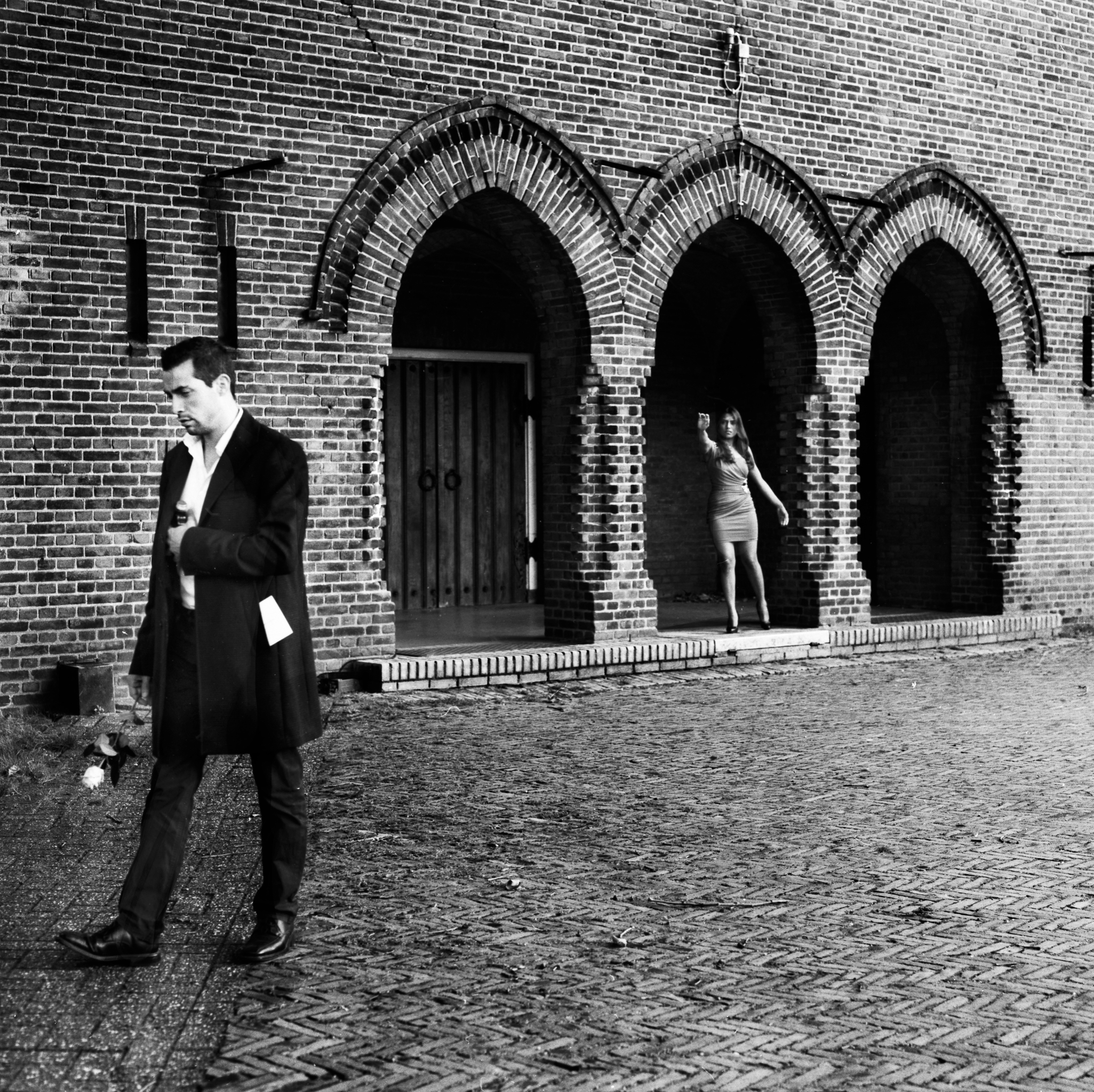
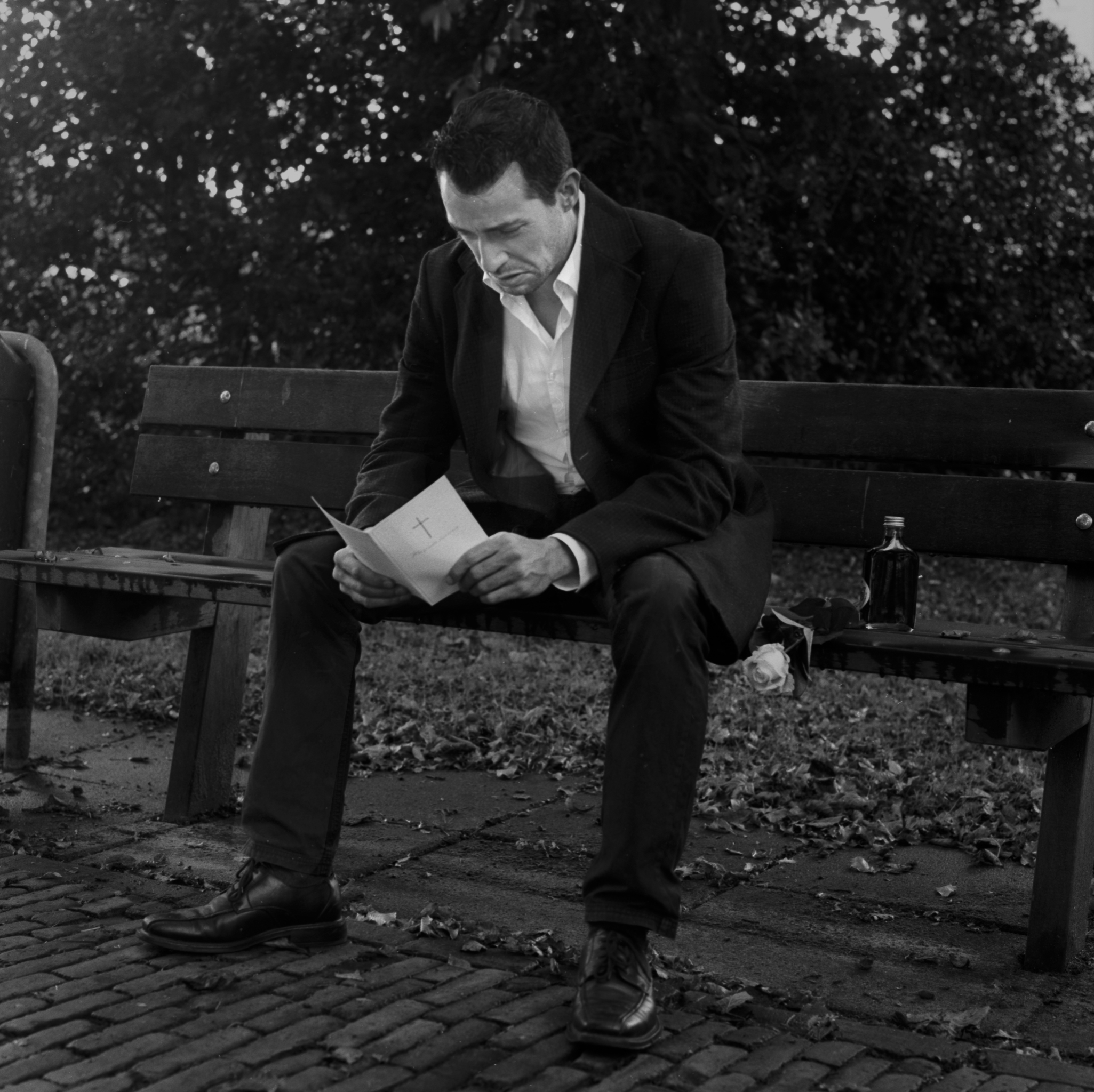
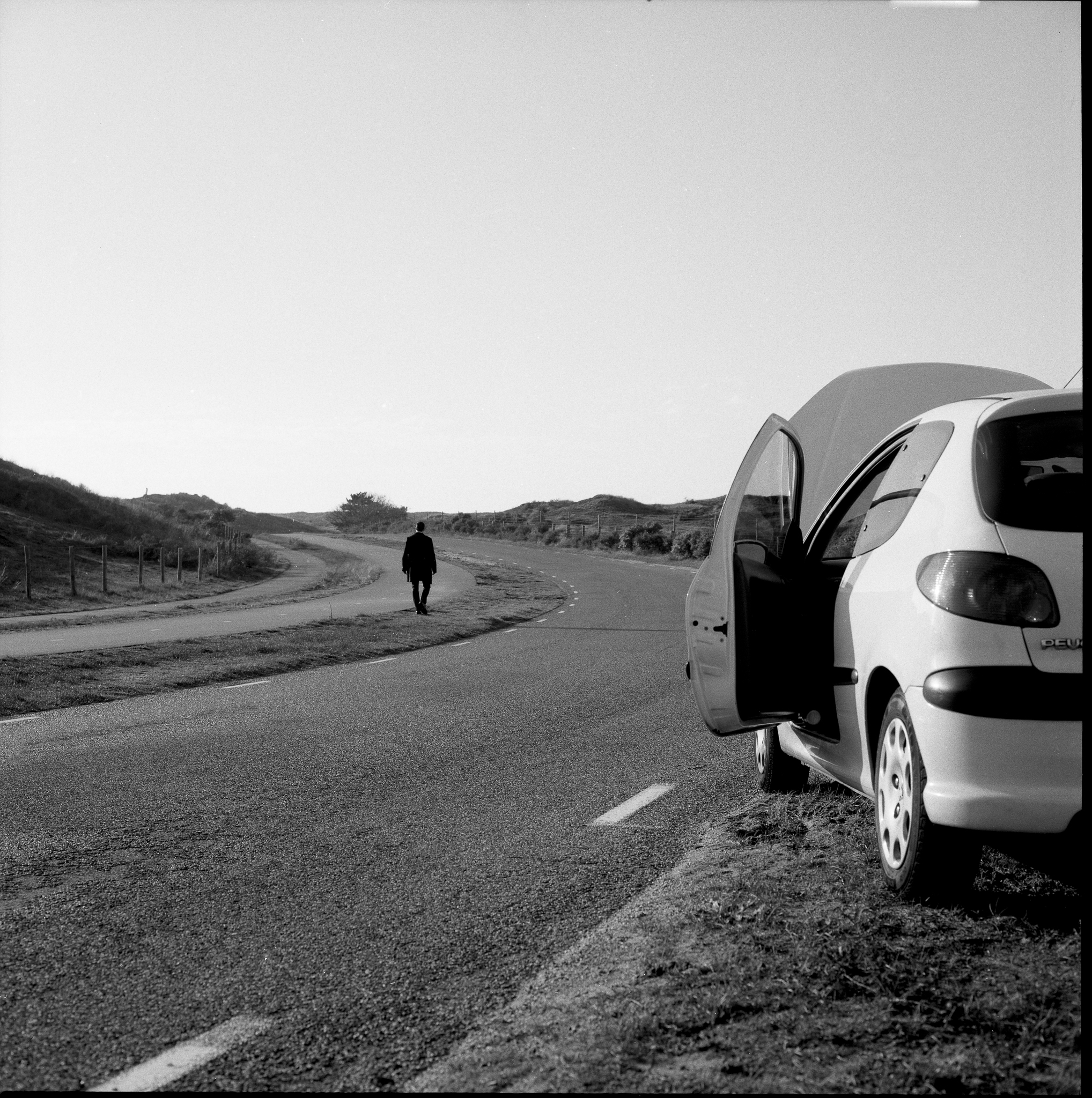
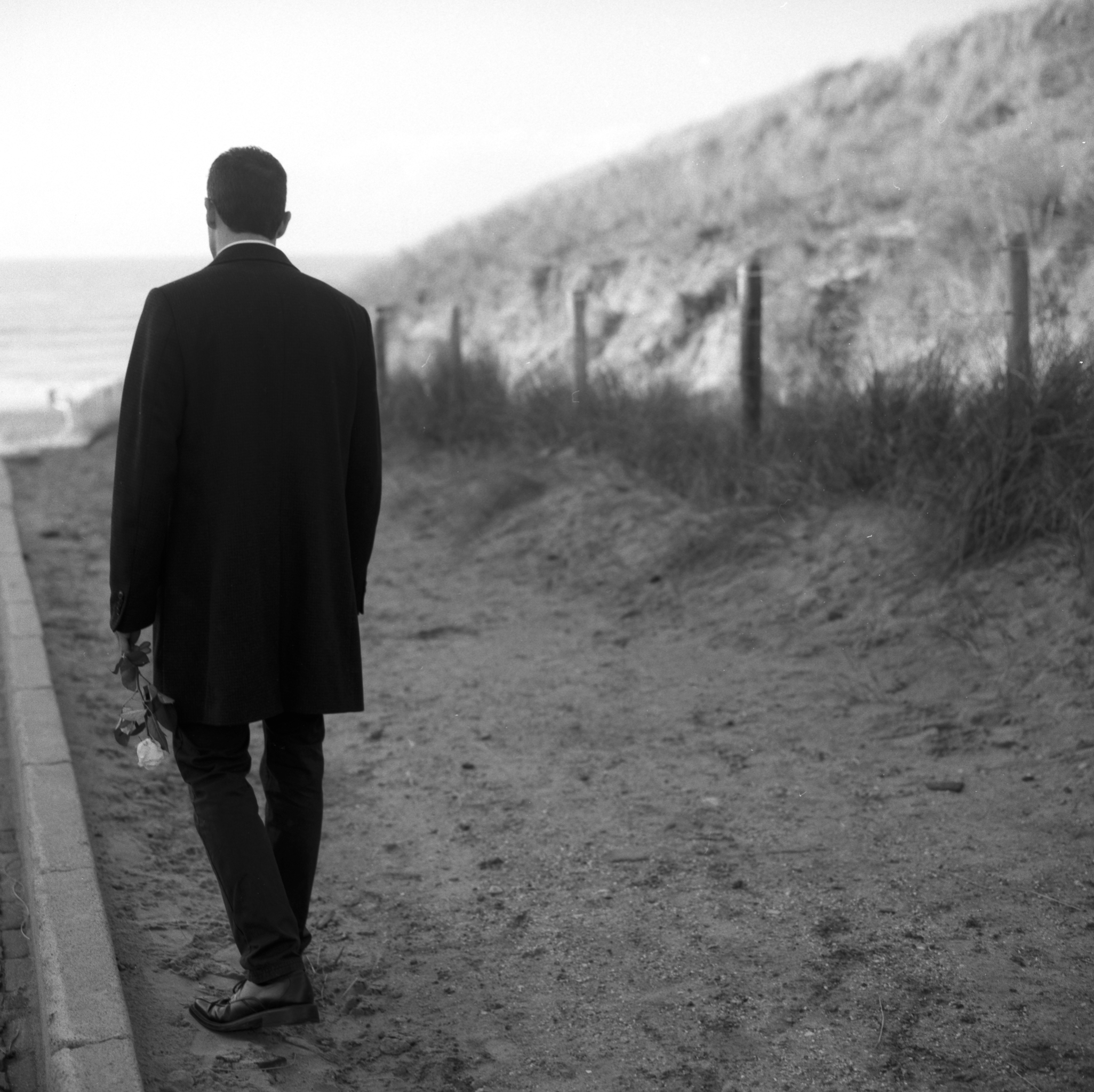
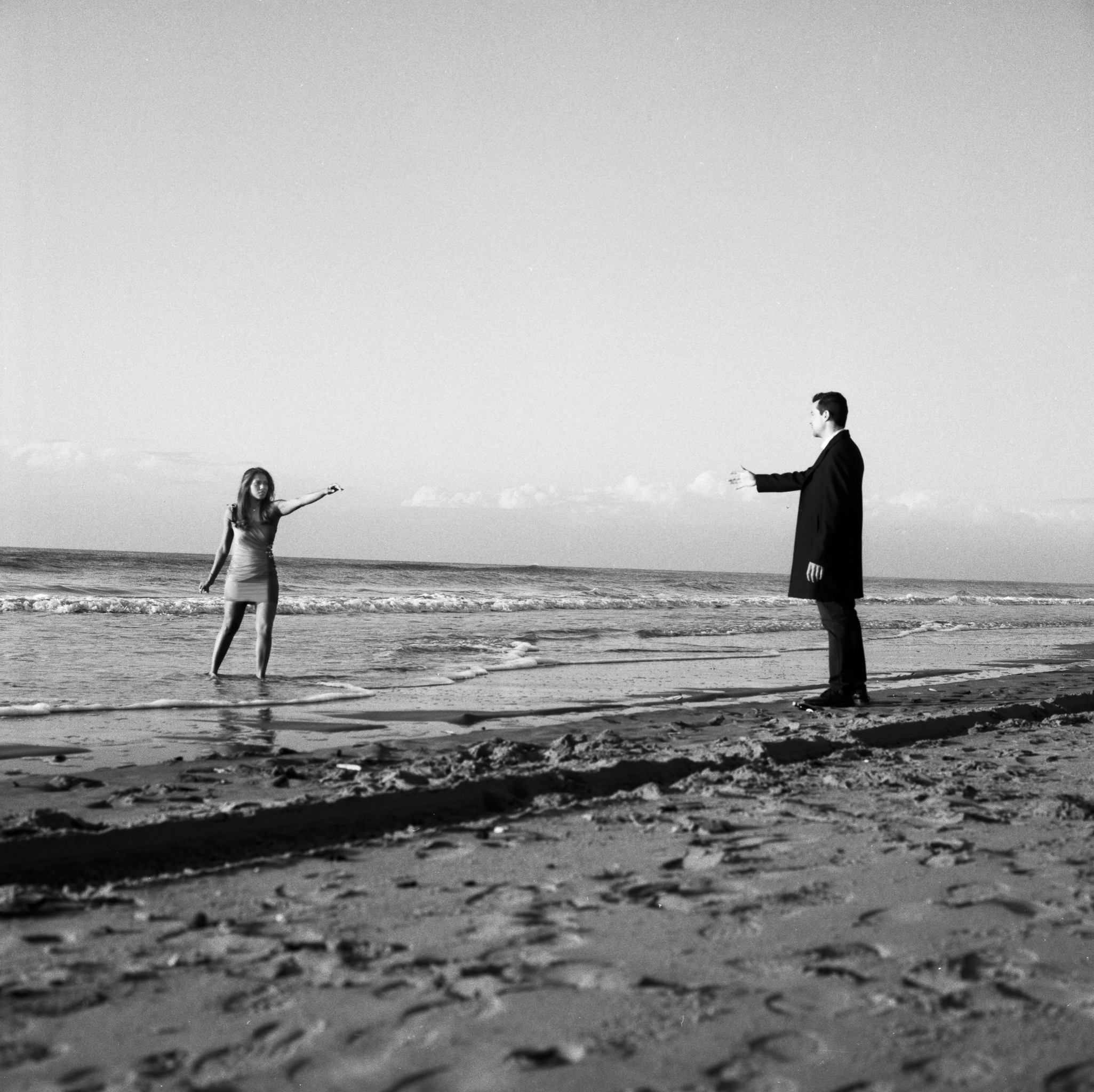
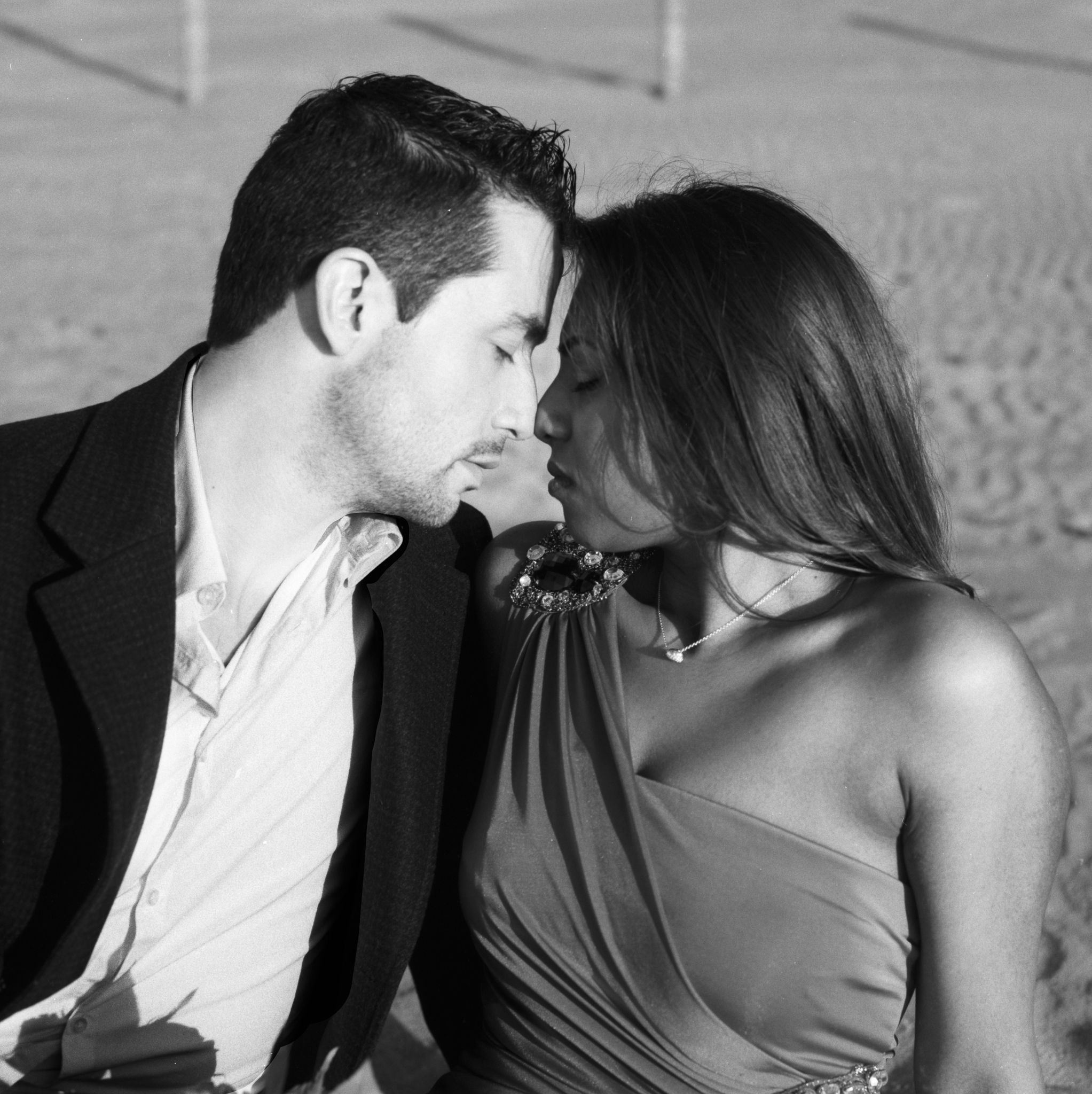
The Digital Series of "get Hurt"
Because I was using the Nikon D800 with the Nikon 50mm 1.8 lens as reference camera, so I could set every thing up an test the lightning without spilling any film, after finishing the analog shots we got a few extra ideas. While I was watching these in post the story changed.
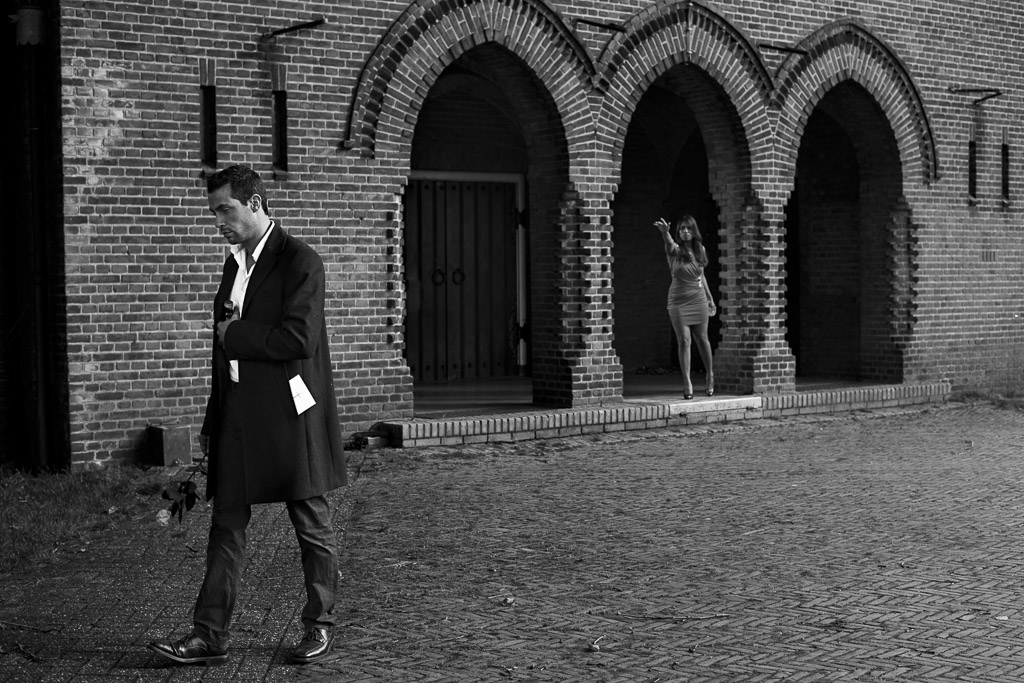
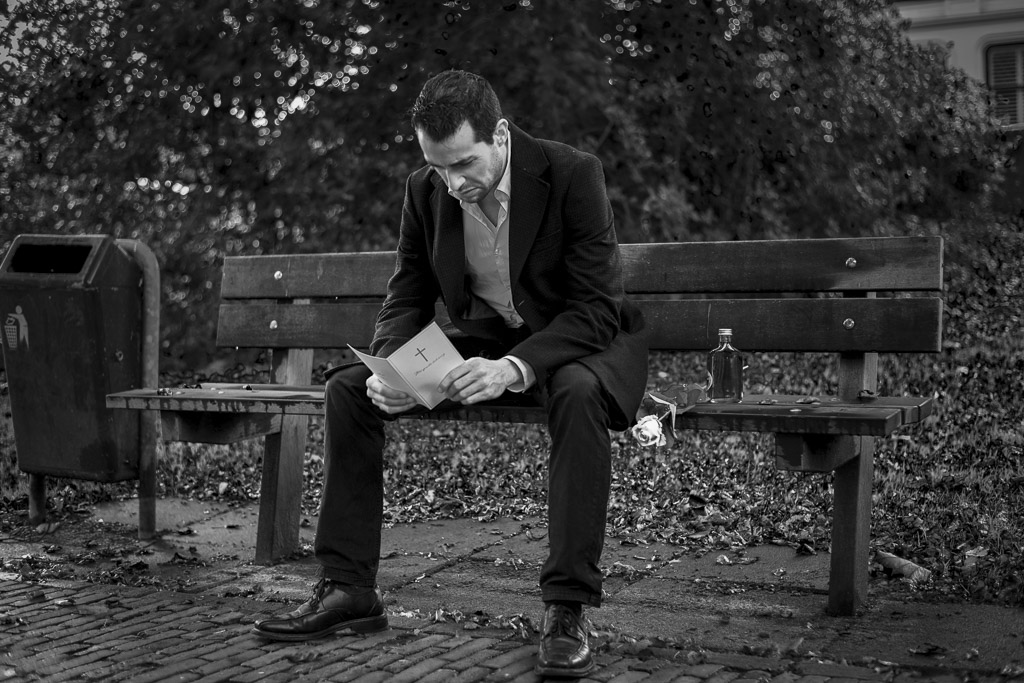
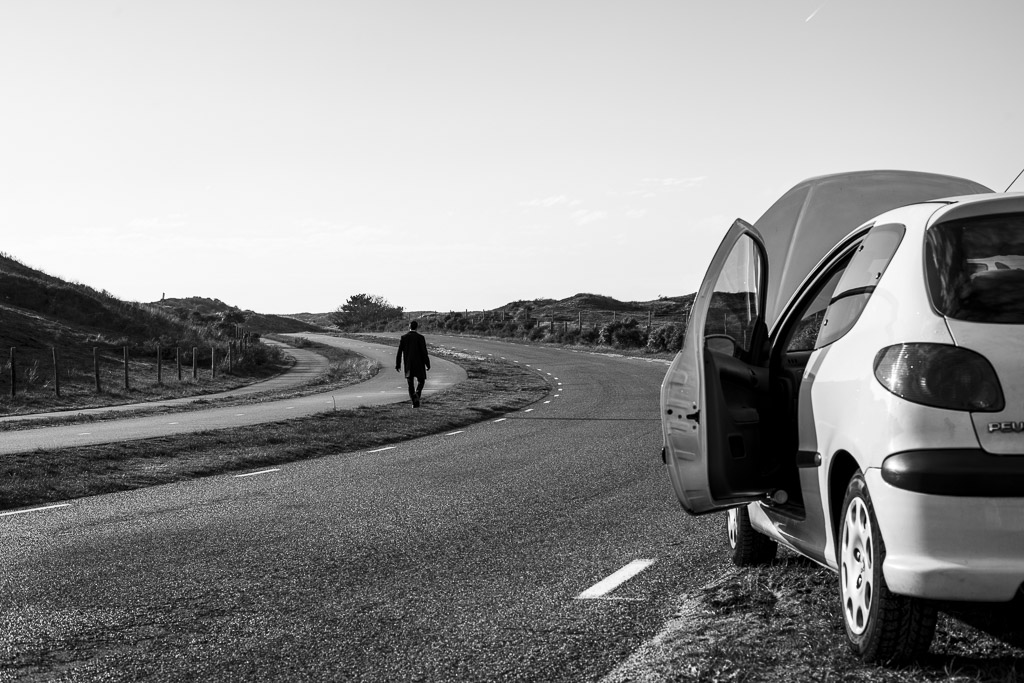
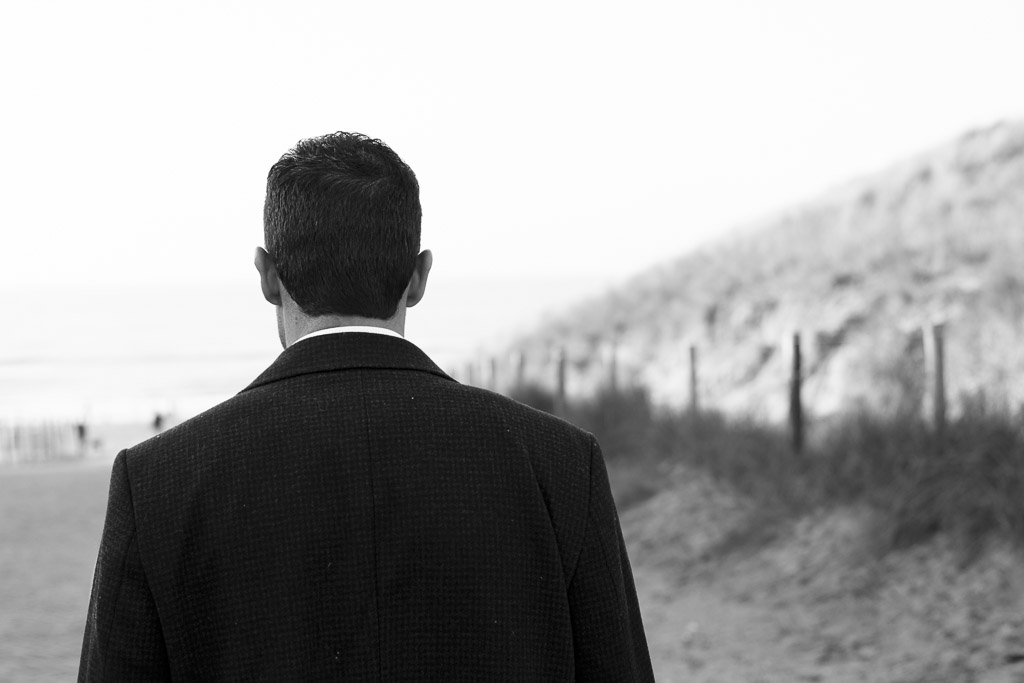

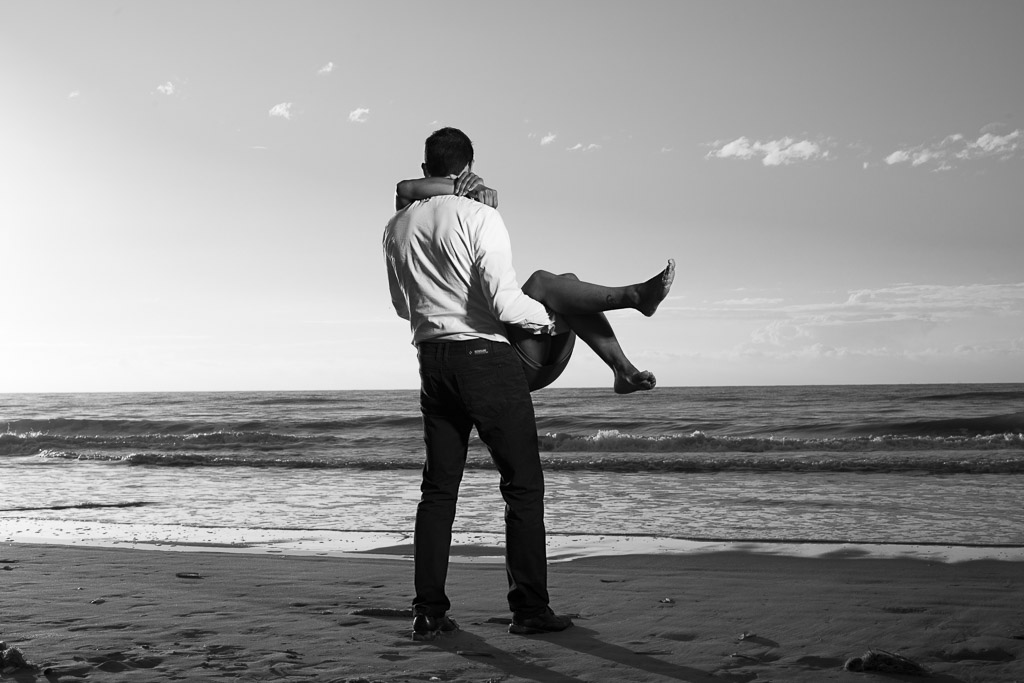
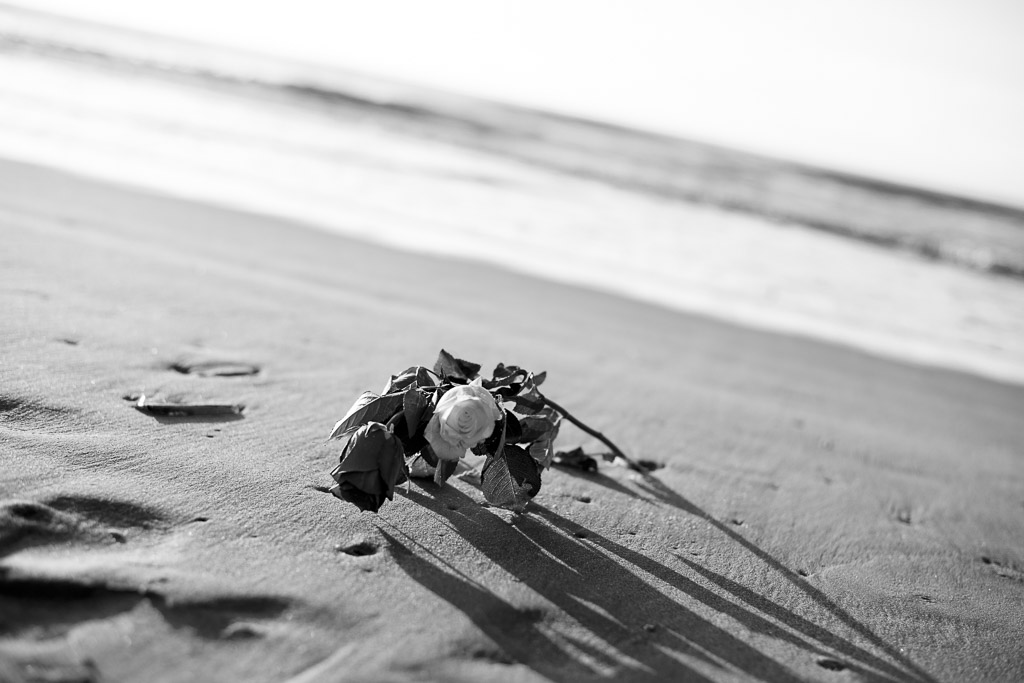
In de digital series the Story changed a little bit. Because we got a few ideas after we finished the one roll of film. So know I would lik to hear from jou which ones you do prefer! Film or Digital? Post it in a comment below!
Leica Test Drive: Leica M (Type 240)
A few weeks ago Leica announced the Leica test drive. I have always been interested in Leica camera's, but never wanted to invest in it before I could test it. So the Leica test drive was the chance to test out a Leica in a real world situation. So I organised a photohoot to test it out and used it on 2 commercial jobs in the same weekend.
The Leica M (type 240) Kit
In the Leica test drive kit was the
- Leica M (type 240)
- Leica Summicron 50mm F2.0 ASPH
- Leica Summicron 35mm F2.0
- Leiva EVF2 Electronic Viewfinder
- Charger
- Card reader
- Case
First Look at the Leica M.
The first thing you notice when you hold a Leica is the build quality. These camera's are build like a tank. They don't look ergonomically, but are very pleasant to hold. The further lay-out is really simple. On top is the shutter time and release button, with the on/off switch. With the on/off switch you can also chance from, single to continuous or timer mode. Also there is a small button voor Movie mode which I haven't used. The Hotshoe has a nice slider to fill it up when it isn't in use.
The back panel has a kind of okay LCD screen, the buttons for LV (LiveView), Play(back),Delete, ISO, Menu, set. On the right side is the D-pad with an info button. At your thumb is a wheel for different tasks, like scrolling the menu and exposure compensation. The viewfinder has a small ring without a diopter, which for me as a glass wearing person wasn't the most comfortable.
If you unlock the bottom plate you get acces to the SD card and the battery. I am not really fond with this, especially when you want to use it with a tripod. Then you have to unscrew everything before you can change the battery or the SD card.
The Leica Summicron 35
The Leica Summicron 35mm f2.0 is delivered in a greatly designed leather softcase. It had a rubbercap to put on the lens hood for if you don't want to use the lens cap, which you can store in a special part of the lens softcase. The little grip makes it easy to focus with. The focus ring is smooth as butter. The aperture ring is nice but has a little bit of a cheaper feel. I have had lenses where the aperture ring felt better.
The Leica Summicron 50 f2.0 ASPH
The Leica Summicron 50mm f2.0 has the same build quality as the 35mm. I missed the little focus thingy of the 35mm! Which made focussing a little harder. For the people who don't know. This €12.000 camera kit has NO AUTO-FOCUS. But the manual focus system with the two glasses works brilliant! Because it is a range finder you get frame lines in the viewfinder representing the area that is in your frame. The 50mm is for me the longest lens to use with this. For longer lenses I would love to have the Hybrid Viewfinder like the Fuji X-Pro1 has. But for working with the Leica Summicron 50mm is good enough!
The Photoshoot
To really test the camera I organized a small photoshoot. I had a lovely Ballerina (Charlotte Geeraerts, two assistants (Mike Foto and Riet Verwoert), a person who filmed it (Ilse van Gemert) and my MUAH Elvira Korten (Made of Make up). For location I rented the Metaal Kathedraal in Utrecht. A behind the scenes video is posted at the end of this blog!
The Images
The most important thing off any camera, the images!
The Leica M has some film simulation. I liked the smooth color the most. It has the "Add the red chanel for contrast" in photoshop look. On the back of the camera it looked great but on the computer the shadows where to dark. Since I always shoot Jpeg+Raw (DNG in de case with Leica) there was nothing to worry about. Below are two images, one is the Jpeg and the other the raw file exported from Lightroom as a Jpeg.
For me the camera worked best in available light. Below are 3 pictures shot only with the ambient window light. Please also notice how much of a difference you can make with just walking around the model!
When I combined flash with natural light the white balance got it pretty right!
Conclusion
I loved working with the Leica M (type 240) with the Summicron 50mm f2.0 ASPH and Summicron 35mm f2.0! Allthough it is manual focussing, it works. The layout of the camera is simple. Everything you need, nothing you don't with a build like a tank body. Everything feels sturdy!
But, is it worth the €12.000 price tag? Well..... for me it's not. That doesn't mean I wouldn't like to have this camera kit, because I really do! But the price is to high for me. I don't see the extra benefit's over my current kit with the Nikon D800 and D610, and my fuji kit. I love the whole feel and look and way of working, but the image quality isn't like, 6 times better than the €2000,- Nikon D610 basic kit.
If I was a fulltime street or reportage photographer this camera would fit like a glove, it is low profile, light, portable. Also for fashion or commercial works it can do the job. It isn't an action camera. Although if you know your technique you can do it!
So my final conclusion. The camera is great, if you have the money, buy it! If you don't, then you don't miss anything. The camera is a tool, the photographers make the difference!
Watch the behind the scenes video of the ballet photoshoot in the Metaal Kathedraal
What's in the camera bag part 1: The Fuji Kit
Hi all, As you might know I currently photograph with a Nikon (D800 and D610) kit, a fuji kit and a Analog kit. In the Up coming weeks I am planning to give you a view in my bags! This week the first Bag is the Think Tank Retrospective 7 with my Fuji camera gear.
Think Tank Retrospective 7 Bag
I must start to say that I love Think Tank bags. I have three off them and use them everyday with out any problems. The way they are layed out is really showing they are not only made for photographers, but also by photographers!
The first thing I like about the bags are that these bags are spacious. I have tried other bags, but the way the Think Tank camera bags are layed out is genius. It is easy for on the go and to get the gear you need fast. Also they are low profile. The retrospective series is also really low profile. The Retrospective series really look like regular "Hey, there is no expensive gear here" messenger bags.
The front flap has also a silent mode. You can flip up the velcro so you can open it up without any sound. Handy during weddings! The only downside is that the flap is lose.
The bags also have a high level of comfort. You can walk around with them for a long time without your shoulder is getting sour.
Now what's in it?
Well it's my Fuji gear bag, so I have all my Fuji gear in it. This is really my everyday with me, reportage/low profile kit.
Fuji Camera:
- Fuji X100: My first Fuji camera, and I love it, especially the leaf shutters which is so silent and great with flash!
- Fuji X-Pro1: This is my workhorse Fuji camera. I really like the whole range finger/Leica style
- Fuji X-E1: This is my back up for the X-pro1 and I use it a lot for the behind the scenes video.
Fuji Lenses:
- Fujinon 35mm 1.4: This is my main lens for the X-pro1. It is a 50mm equiv, and great street en reportage lens
- Fujinon 56mm 1.2: Great lens for portraits!
- Fujinon 18-55mm 2.8-4: This lens I mainly use with the X-E2 for video.
Other:
- YoungNuo YN-560: Great inexpensive flash!
- Cactus V5 Triggers: For remote triggering of the flash
- 2 chargers: For charging the batteries on the road
- Back-up batteries
- Extra SD-Cards
- Business Cards
- Blower: For cleaning the sensor
- iPad Mini (not pictured)
- Back-up charger for my Phone
Well that's what is in it! Next time I will take you through my Think Tank Airport Airstream bag with my Nikon kit!
Street Photography: Paris 2014
For a while I had the wish to practise some street photography. For me there are only a few city's to really do this, and number one on the list is Paris. So I went for four days to Paris!


The first day I went on the street with just my Nikon D610 with the Sigma 24-105 f4 lens. For quality this is a great. Something I noticed that a lot of people on the street where smoking.
The standard strap didn't work out to be easy to use. So i went out for the search for a new strap. The street north of the Bastile is a truth photographers heaven. I have never seen so many nice Photography shops together in one street! I soon found a Black Rapid Yeti which let's me combine the Nikon D610 and the Fuji X-Pro1 on both sides of my body.
The Second day I went out with the Nikon D610 and the Fuji X-Pro1. Although it is a great combination, after walking a day with it my shoulder got really bad. But the X-Pro1 with the 35mm 1.4 lens is a truth beauty for street photography. It is small and compact and let's you held in So for the thirt day I kept my D610 at home.
BUT!!! not after waking up at 6.30 to walk up the mountain of the Montmartre to photograph the Sacre Couer without many tourists in front of it. But it appears that when there are no tourists in front of it and there is light, there is a hole army of cleaning people in front of it. But I managed to get one good shot.
After some walking around in the streets with just the X-pro1, we took the boat on the seine. Giving some nice alternative views on Paris.
The last day we made our last walk around Paris. Now I was finally getting into getting better street photography shots. I really noticed it takes a lot of practice. Taking you time and slow down is really essentialy for some good street photography. Also find a stage and the players will com (quote from Jay Maisel) really works!
The last stop was at the Norte Dame. This was the place to work on a street photography project I am working on. It is about photographing photographers! Especially tourists!
After all it was a great trip and I have learned a lot about street photography. Am I now a street photographer? No! I just got my tose wet. But I can't wait for a next trip to go further and explore it more. I don't now if I will ever be a real street photographer, but I loved ding it.
DANCE PHOTOGRAPHY SESSION PART 4: Two Light Action shot
Welcome to the fourth and last part of the Dance Photography session serie. The first shoot where all one light shots, if you haven't read the you can read them here:
- Dance photography session Part 1: The headshots
- Dance photography session part 2: The group shot on the wall
- Dance photography session part 3: One light actionshot
The Two light set-up
Again I started with one Elinchrom Quadra RX with the A-Head on the B-port with the Elinchrom Rotalux 150 deep indirect octa as a modifier. The reason I used the B-Port was that it has a faster Flash duration to freeze the action better. Also notice in de diagram that the light is slightly behind the subject turned toward the subject away from the wall for a more dramatic look. The downside off this was that the wall was getting really dark and I lost everything of the surroundings. It was getting to dark. So I added a small bare YoungNuo YN-560II speed light on slave mode. It was just of a 1/64 to 1/128 setting. It was just there to give a little push of light on the background.
For the Camera I used the Fuji X-pro1 with the 35mm 1.4 lens. Settings: Iso 100, 1/125 at f5.6. Because of it was getting darker on the evening and the Fuji's aren't the fastest focussing camera's I used a little trick from the old days. I made a focus zone, I positioned somebody between the flashes, focussed on this target in manual focussing mode. After that I asked the dancer to keep the jump in this zone. Remember in the old days sporting photographers used this to get good focus, there was no AF to give the blame if you had out of focus photo's!
In to Post
As you can see in the screen capture the only post processing where a few simple adjustments in Lightroom 5, and I added a vignette using the radial filter.
I Hope you have enjoyed this series about dance photography. If you have any questions please mail me or put a comment down below!
DANCE PHOTOGRAPHY SESSION PART 3: One Light Action shot
This week the next part in the Dance photography series. If you didn't have read the firs two part you can read them here:
- Dance photography session Part 1: The headshots
- Dance photography session part 2: The group shot on the wall
The One-light Set up
The first shot was lightning wise very simple. I Just used one Elinchrom Quadra RX with the A-Head on the B-port with the Elinchrom Rotalux 150 deep indirect octa as a modifier. The reason I used the B-Port was that it had a faster Flash duration to freeze the action more.
For the Camera I used the Fuji X-pro1 with the 35mm 1.4 lens. Settings: Iso 100, 1/125 at f5.6.
The post Production
For the post production I used a little more Ferry Dusting
The first step I did was the Eyes, Duplication the Layer, set the blend mode to screen and add a black Layer mask. Then use the white paintbrush and paint it on the irises. Then use the opacity to pull it down so you won't get scary bright eyes!
The next step is painting in the light. This is a technique I learned from Dutch commercial photographer and Hasselblad master Hans van Ommeren. It starts with darken the pictures. To do this a little more controlled I used the curves. Hans normally uses the Levels adjustment layer. After you darkened the whole picture use a layer mask and use a brush on an opacity/flow of 20/20. Then paint back the light on the places you want it. This gives a really nice and moody look. Also it really helps you focusing on the subject.
The net step is smoothing the skin out a little bit. I just used the Inverse High pass skin technique for this.
To finish it I used a little bit of high pass sharpening with a soft light blend mode painted in on the places I wanted it.
Last workshop for this Year
Due my busy schedule the last workshop this year will be on October 1 at Fotoflits this year. If you want to enroll for the workshop click here. In this workshop you will learn how to get the most out of your flash light. If you do portraits of more action work, you can do more than you think!
DANCE PHOTOGRAPHY SESSION PART 2: The group shot on the wall
Hi and welcome to the second part of the Dance photography session. This serie is about a commercial dance photography shoot I did for Djenz Factory. If you didn't have read the first part about the Headshot, click here and read about it: DANCE PHOTOGRAPHY SESSION PART 1: THE HEADSHOTS.
The set-up
As you can see in the test production photo the whole set-up was just one light! The Elinchrom Rander RX Quadra, with an A-head in the A-port for the biggest blast of light. Everything was mounted on a C-Stand with three sandbags and my assistent holding it. It went up for the maximum height, and I didn't want to take any risk of it tipping over. The camera was the X-Pro1(ISO:200, 1/125th, f8) with the Fujinon 18-55 2.8 - 4 lens at 18mm.
Post-production
Because this was a group shot on a 16mp camera I kept the post production very simple. These shots are about the group, not about retouching every skin detail. And for doing that, there was not enough information to make the skin look better. So I just focused on getting the mood. So all I did were some basic Lightroom touches. Just some sharpening, highlight, shadows, and a vignette to focus the view on the group.
Shooting portrait and landscape
Remember always to also shoot and deliver a Portrait and a Landscape version of the photo. This way your client has the option to choose and have the highest quality for the way they want to use it.
I switched from Canon to Nikon
After a long of wanting to switch I finally switched. I had Canon but was unhappy with canon as a company and especially their arrogance.
D800 vs D4 vs D4
Last year I had the opportunity to work with the D800, D4 and D600 from Nikon for my Dutch Jazz Portraits Project. I love the High res of the D800 but the file size of the camera was huge. The D4 is a speed monster, but it didn't felt the camera I would love to work with. It is great for journalists,but not for me ad a commercial music and dance portrait photographer. The D600 was also a really sweat camera. But I missed he resolution of the D800 sometimes.
The Decision
So now almost a year later I was still doubting adding D610 or D800, and I couldn't choose. So I took the next solution, I took the D800 with the Sigma 24-105 f4 lens and traded in all my Canon gear for the D610 and the Nikon 85 1.8 (a lens I really love for portrait work).
Upcoming weeks I am planning some shoots to test the camera's out and post some new work with them.
Fuji's
Some off you might think now, what about you Fuji's. Well I still keep them and love them, especially for traveling work. Because the Nikons great, but heavy! In two week sI will go to Paris for some new street work, and I will only take my Fuji's. Also the Fuji's are not good on video so I will use the Nikon for that. So the Nikons will for most be my studio and big shoot camera's and for when I have to more post work. The fuji will keep being my reportage/documentary camera's.
Shooting a friend with a Fuji X-pro1
A while a go I was at the local sushi restaurant with a friend. I just had my Fuji X-pro1 and the 35mm 1.4 lens. So I fought it was a nice moment for some practicing and learning the camera and using it with natural light. Something I really like about the Fuji X-pro1 as a portrait camera is the size. So you don't have this "let me make a picture of you while I hold this bg ass camera in front of my face with a big lens while I stand on the other side of the room with loud clicks" effect.
Dance photography session Part 1: The headshots
In the upcoming blogs I am going to take you through the process of a dance photography shoot. A few weeks a go I got the call from Djenz Factor that they needed new promotional photo's for their new website. Having worked with them multiple times before I knew this was going to be fun! For location we have been to the area of the Lichtfabriek in Haarlem. Because that is where the new dance studio is going to be. We wanted to start with an outside session. It is in an old industrial area so it is really nice. The only thing that was looking to be a problem was the weather, but it was great weather that evening! We started with the head shots of the creative team
The Set up
For the Headshots I used a fairly basic setup. On the location we found this lovely brick wall to use as a background. For the lighting I used my Elinchrom Quadra set with A heads. The main light was in the A port with the 100 Rotalux octa soft box. I Also placed a second light on the background, that was in the B port with the Elinchrom 18cm reflector and grid, so it had a little bit of a natural vignette. To have a little bit of fill I used a silver reflector handheld by my assistant. For camera I was using the Fuji X-pro1 with the Fuji 56mm 1.2 lens. I was really happy to use it for the first time on a job. Setting were: raw+jpeg fine, F10, 1/125 ISO 100.
Going to Post
When I first opened the files in Lightroom I was really impressed by the jpegs of the camera. They where so good that I even have delivered some pure jpeg's to my clients. I also noticed that the Lightroom Fuji profiles are still of and not matching enough for my taste. For post I really have speeded up my workflow. In the past I was using Nik Color Efex pro a lot, but the loading time was getting to long for me. When I just have to do a few pictures it is no problem, but when you have to do around 50, it is too long. So I have started to create some actions to speed everything up.
I first started to remove some of the basic blemishes with the healing brush. After that I used the Inverse High pass skin softening action. Which is based on a technique I learned from Scott Kelby on KelbyOne. It gives a nice skin in just a few seconds. After the skin was done I wanted to make the eyes pop a little more. So I created another layer, set it to screen and hidden it with a layer mask. Than used a brush to reveal it on the eyes and used the opacity to make it look more natural. To add a little more contrast I made two level adjustments and painted them in the Layer masks. To finish it off used the High Pass filter to give it a little more sharpness on some areas.
Done
And that was all I did. If you have any questions post a reaction down below!
Photography is not about the amount of pictures you shoot
Currently I am planning my wedding, and am looking for a wedding photographer. While I am checking sites I see something in common I also noticed people asking me when the ask for the price off a photoshoot. The question is "How many pictures do I get?". And on the sites for X amount you get at least x amount of pictures. But what is more important? The amount off the pictures or the quality???? If I do a portrait shoot I can off course shoot 50 to 100 pictures. With current camera's I can even make 5 to 14 photos per second! So how many do you want to have?
Personally I think the quality is way more important. I rather take take a hour and deliver maybe 5 to 10 great pictures, in stead of 50 or 60 of which maybe 5 are great. Sometimes when I do a commercial photoshoot we take half a day to just take the one picture!
Also when I work with dancer, you can sometimes have to take 20 to 50 pictures to just get the one. Because when a foot or limb is just a few degrees off, the picture is bad. I rather taker more time to get it right then deliver a picture with a wrong position, because everybody who knows about ballet won't so "Oh, what great a photo", NO! they will say" Well it is nice, but the foot is off!". So it can take 15 minutes to get the one, so with a one hour shoot you maybe and up with only 5 great different pictures.
Also I like to take the time to fine-tune the lighting. This cuts down time in post production. Normally I have to jus a few finishing touches in Lightroom/photoshop the end up with a great picture. In stead of having to stress to fix shadows, or having to get your quotum and also take lesser pictures and polish them up. Remember a bad picture will never get good, but a good taken picture is easy to get wow! And you are a good as your worst picture.
North Sea Jazz festival 2014
Some of you may have already heard it on Facebook but I had the privilege to expose at the North Sea Jazz Festival 2014 in Ahoy Rotterdam with my Dutch Jazz Portraits project. It was a heavy but fun week. A lot of getting in bed around 3 and waking up at 11 and get back to Rotterdam.

The music was great and I have met some great people. Also I have met new artist who will get into the Dutch Jazz portraits. Also some of the artists who are already been photographed for the Dutch Jazz Portraits project signed their photo at the North Sea Jazz Festival 2014. Guys like Benjamin Herman and Ruud Breuls.
For gear I used my Fuji;s only, mainly the X-E1 with the 35mm and the X-pro1 with the 56 1.2 which I bought the morning of the first day of the festival. And is a great lens, I used it sunday on it's first commercial dance photoshoot.
Shooting The Preacher Men
A couple of weeks a go I got the question from Efraim Trujillo if I could should o location. I told him I just bough a new Elinchrom Quadra RX set and can do photoshoots everywhere. So I got the question if I would like to make some promotional photo's for his new Jazz project "The Preacher Men". We could only plan the shoot a hour before there first gig so I had to work fast. Armed with my Fuji X-pro1 with the 35 1.4 and X-E1 with the 18-55 2.8-4 and the Elinchrom quadra with the Westcott 60" umbrella I went to the gig.
I started with a few portraits of the individual band member. I found this red chair and used the umbrella half closed to create a poor mens soft box, a trick I learned from Zack Arias.
After the ones on the chair I found a couple of doors I thought that look cool and would gave them some extra choices in different kind of looks. So the final groupshot I did in front of those doors
In post I just did some extra sharpening and darkened the background with the chair shots to get of the background noise.
Crop or Crap factor
For everybody who thinks APS-C is to small or who wants to know the difference between sensor sizes. Zack Arias has made a video which explains it in plain/bold english. So watch, learn and enjoy it!
Dance photography with Fuji Camera's
Last week I did a dance photography sessions with the Fuji X-pro1 and X100. I Asked two dancers to model for the shoot, One is a classical ballerina and the other a break- and zouk dancer.
In studio
I started in the studio with just one light. I recently bough a Elinchrom Rotalux 150cm Deep Indirect Octa soft box on a white background. But it was to light for my taste so I changed to a light grey background just for some more moody feel.
For light I started with the Elinchrom RX one, But this was to weak to over power the ambient light in the studio in the 150 Deep octal, It is a big softbox!!! So i changed it to the Quadra. Because the ISO starts at 200 with the Fuji's and they have APS-C sensors, I didn't wanted to much light, for a smaller depth off field (f5.6 to f10/f11).
After some solo portraits and dance photo's it was time to put them together
I am starting to love my Fuji's more and more, The only things I really dislike is the waiting until all the photos are written to the card before you can watch them back. Because I was working with dancers this was getting anoying. They want to look them back fast so they can check if the position is right. Especially the feet. If you never have worked with dancers then it is good to know that, the light and emotion can be perfect an you go, "WHOOOO GREAT PHOTO JEEEEJJJ!!!!", but the feeds or hands are a few degree of..... It is not a good photo. Because people who know dance see it and you will get your butt kicked!
Also I would love to have the option to shoot ISO100 Raw. Just to be able to work with smaller aperture to get a smaller depth of field.
Going Outside
For the outside shots the Fuji X100 is still a killer. Because of the Leaf Shutter you can get a really fast X-sync to get a darker sky. I switched to the Elinchrom Maxilite because it has a higher output, so I didn't had to stress the battery off my power pack so much. I was working with the Elinchrom Ranger Quadra RX with an A-head on the B-port. This has 33% of the A port. So with the Elinchrom Maxispot I had enough light and stopping power to freeze the action! Also when I switched to the X-pro1.
Back to the Studio
After the rooftop shoot I wanted one other shot I saw in a Joe McNally Kebly training video. I just used a Single Quadra head in the B-port on full power in a Small Elinchrom Rotalux strip soft box. This was on a C-Stand at max hight, The dancer was slightly behind the head to feather the lighting.
Into The Dark Lightroom
Into lightroom I do just a little bit of FerryDusting on the imaging. I am not a big photoshopper. I want it to by stylized but still had to be real. So I did just a shapening, a bid of Pumping up the shadow, Drop the blackpoint. Opening in shadows, somehow adds some blue's in black, so especially with the studio shots I pulled down the blue saturation completely. Also some vignetting to finish it.
The Fuji's
Some say the Fuji's are not fast enough for shooting sports or action. But I think these pictures proof different! Getting your techniques down is the clue to good photo's, camera's are tools like a hammer is for a carpenter. And Photoshop and Lightroom is just the cream to finish of the dessert. Getting it good in camera with the light is the most important thing.
Wouter Kiers: Flamingo
Het is al weer een paar maanden geleden dat ik gebeld werd door Wouter Kiers met de vraag of ik de cover van zijn eerste echte Solo single wilde fotograferen. Het concept had hij al bedacht we hadden alleen nog ene model nodig, gelukkig was Janine beschikbaar. De foto hebben wij in de studio gemaakt met een simpele opstelling. Witte achtergrond en ene plaat plexiglas op de grond. 2 Elinchrom BX500ri's met softboxen op de achtergrond en twee 100cm softboxen met Elinchrom RX one en BXR500 lamp van de schuinvoor.
Nu is de signle uit en voor iedereen ook te koop op iTunes!
I Went Fuji
Ok it's official I went Fuji! After years of shooting Canon I have moved over! The reason, the arrogance of the people that represent Canon and I wanted a smaller and lighter kit. I already had the Fuji X100 last year and fell in love with it. Although it can be a pain in the ass camera sometimes, but when it works with you it's a superb camera.
My kit
My Current Fuji kit is:
- X-Pro1
- X-E1
- XF 35mm 1.4
- XF 18-55 2.8-4
- X100
Fuji X100
The X100 was my first Fuji X camera (my first digital compact camera's where also Fuji's like the S5600). I really love this camera. It has a fixed 23mm (35mm eqv.) f2 lens and I really love the small size and focal length. It is ideal for street and reportage photography. Also the leaf shutter gives you a really fast X-sync, and the 3 stops internal ND filter makes it a great camera!
Another downfall are the sticky blades. Luckily Fuji have a great service and after two weeks of missing the camera I got it back completly repaired and checked.
X-Pro1
I have been wanting this camera for a while, After seeing Zack Arias with it, and some work of other photographers I was like I also want that style. I also been doubting a long time of going to Olympus 4/3 camera's. I love the OM-D EM-5. But the X-pro1 is just a little bit more what I wanted. I wanted a small camera with great sensor and just a few buttons. The only ones I need are Shutter time, Aperture, Iso, Shutter release and a on/of switch. Just like the Analog camera's I like to use .
Also I love to play with a smaller Depth of field. Believe me I still would love to work with the Olympus OM-D EM 5, but for may hands the buttons are just a bit to small and wobbly and there is a little bit to much trickery in it. Also the people at Olympus are great, friendly and helpful and I can recommend the Olympus Camera's to anybody, but for my taste the Fuji Camera's where more fulfilling my needs.
The first real shoot with the Fuji X-Pro1 for me was with Daniel Lanois in the Carre theater in Amsterdam. I only had the 35mm lens for it. I loved how it focused. Also the EVF was nice to have. Being in a theater only being able to shoot availeble light it is a blast to have WYSIWYG fews of your photo's.
During a testshoot for a upcoming commercial shoot it had a few times where it wouldn't trigger my flash. This is something I halve to dig in to. During the day It worked fine in the studio. I don't know if it is the trigger or the camera yet, but it was annoying. Also I really hate i that first all the photo's have to by written to the card before you can really preview them. Notice that you get a 1.5 sec preview after you took the shot in de OVF/EVF.
The OVF is also once to have shooting in low light and on the street. It gives you a more few of also the surrounding. Also it gives you more eye contact with the model.
X-E1
The X-E1 I almost got for free! I wanted the XF-18-55 2.8-4 lens. The lens costs €699,- and as a kit with the X-E1 €749, so for €50,- I got the Fuji X-E1 with it. Firstly I bought it as a back up camera, but as it is almost the same as the X-Pro1 I use it as a co camera, mainly not to have switch lenses or use when I maxed at to buffer and have to keep shooting.
The 18-55 2.8-4 lens became my standard lens. As I am used to use the Canon 24-70 2.8, it is a great replacement. Much sharper, cheaper and lighter!
Video
The Fuji X-Pro1 and X-E1 also have video functions, and to be short, the box is checked for video. But actually it sucks, the quality is not that well. So if you want to do also a lot of video get an Olympus or Nikon!
DSLR Killer?
Are the Fuji's DSLR-killers? The be honest not quite yet. I would use the Fuji kit for any kind of job, but I still keep a DSLR on the side. My Canon gear is going out the door, but A Nikon D610 or D800 will come in for video and high-resolution work on which some more post/photoshoping has to be done. Also the teetering functions are nice to have with a client watching over your shoulder and with workshops/training sessions!
Wishlist
On my whilst is the 56 1.2 portrait lens and many trading in the 18-55 for the upcoming 18-135 for allround lens. Further camera-wise:
- Be able to look back pictures while the photo's are being written to the card!!
- Thetering options
- Shooting ISO100 with Raw Files






































































